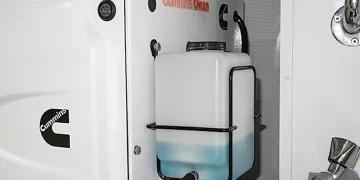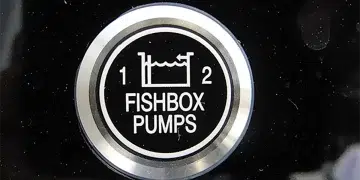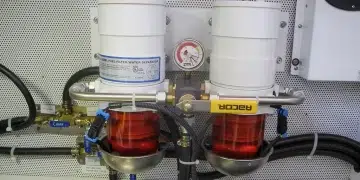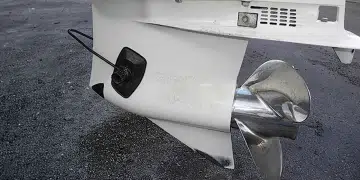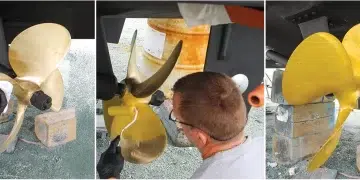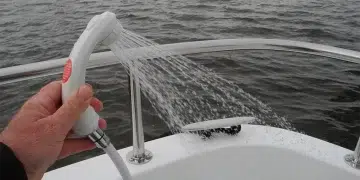Marine strainer maintenance: Do You Know These Easy Insider Tips?

Always do preventive maintenance to keep the strainer clean.
A strainer on your boat is designed to protect a raw-water pump. The strainer allows a constant flow of cooling water to the engine or generator. Other marine uses for a strainer include the live bait well pump, anchor washdown pump, marine head, air conditioner pump, or the stabilizer pump cooling water. Clearly, marine strainer maintenance is extremely important for all owners.
You may cross a rip line of seaweed while underway and suck up some debris. This can clog your pump. So, a strainer is your first line of defense to protect the pump impeller or rubber vanes. BUT, the clog also starves the pump of raw-water flow, so the marine equipment will not have enough water flow to cool and may overheat or fail.

The Most Common Strainer to Foul
Nope, it’s not the engine or generator strainer. Usually, the air conditioner raw-water pump is running more often at the dock. Often, in the marina, there is much less current, so sea creatures such as minnows or shrimp get sucked into the strainer. Seaweed and, unfortunately, plastic bags can also get sucked up into the air conditioner strainer.
Notice the air conditioner has a fault code High Temperature/Pressure, often seen as HI P5 on your display panel. This is telling you that the water-cooling flow is restricted or stopped by a clogged strainer causing the refrigerant, aka Freon, to heat up and expand.
Of course, your generator or propulsion engine may occasionally overheat with a clogged strainer. Watch the dashboard temperature gauge climb over the standard temperature. If the propulsion engine temperature creeps up slowly, you may assume your strainer is clogged. Slow the rpms, and the temperature may decrease enough so you can cruise to a safe place to inspect and clean the strainer.
Subscribe Here For Weekly Updates
Diagnosis: Clogged Strainer!
Here are some simple steps to follow with an overheating engine or air conditioner. First, check the sea cock handle to confirm it is open. Then, use a flashlight to look into the strainer. Most will have a clear bowl for visual inspection. If you cannot see through the clear bowl, then it’s a safe bet that the strainer is clogged. You may have barnacles growing inside the bowl blocking your view. Uh-oh.
Next, close the sea cock handle to prevent the ocean from rushing into your boat. Then, open the strainer top and expect some back flow from the hoses. Remove the strainer basket and set in a plastic tray you had ready for inspection and cleaning. A stiff bristle brush will help to scrub away the seaweed.
CAUTION: Do this work in the bilge or on shore in the parking lot. Never attempt to do this on the dock. If the strainer basket jumps overboard, it can’t swim and will be gone forever!

While cleaning the basket, use a strong bottle or toilet brush to clean the inside of the clear strainer bowl. Never use a wire brush, always a synthetic bristle. If you decide to take the clear bowl out of the assembly, first purchase the new gasket material. The old gaskets may be too stiff and hard to reuse.
To reassemble the strainer, be sure to wiggle and twist the basket back in place. There is usually a basket alignment prong on the bottom of the strainer body. Check the strainer top for that gasket, usually a rubber O ring. Lubricate that with compatible grease or even a clear lip balm like ChapStick and screw together. If the top resists, then assume the basket is not seated in the bottom of the strainer body. Rearrange the basket and try again.
Now Test the System
Open the sea cock and start the engine or air conditioner pump. You should see water flow swirling in the strainer basket. Look for air bubbles. If present, that is a clue the lid is not secure. The air bubbles can damage the rubber impeller and cause it to fail resulting in an engine overheating.
There is always an exception to the rule and that is a Dutch strainer made by Vetus. Its strainer has a clear top and has a lot of air bubbling in the top. Not a problem, that is its design.
Marine Strainer Maintenance DIY to Keep Cruising
Best preventive maintenance is to use a flashlight to check the strainers every time you are in the engine room. If your visual inspection proves dirty, then take care of the problem sooner rather than later.
-by Capt. Chris Caldwell
View The Podcast Episode About Marine Strainer Maintence Here:
Related Posts
var jnews_module_54102_1_66feea05124e2 = {“header_icon”:””,”first_title”:”Related”,”second_title”:” Posts”,”url”:””,”header_type”:”heading_6″,”header_background”:””,”header_secondary_background”:””,”header_text_color”:””,”header_line_color”:””,”header_accent_color”:””,”header_filter_category”:””,”header_filter_author”:””,”header_filter_tag”:””,”header_filter_text”:”All”,”sticky_post”:false,”post_type”:”post”,”content_type”:”all”,”sponsor”:false,”number_post”:{“unit”:”px”,”size”:6,”sizes”:[]},”post_offset”:0,”unique_content”:”disable”,”include_post”:””,”included_only”:false,”exclude_post”:54102,”include_category”:”6173″,”exclude_category”:””,”include_author”:””,”include_tag”:””,”exclude_tag”:””,”category”:””,”post_tag”:””,”jobpost_category”:””,”jobpost_job_type”:””,”jobpost_location”:””,”jobpost_tag”:””,”sort_by”:”latest”,”date_format”:”default”,”date_format_custom”:”Y/m/d”,”force_normal_image_load”:””,”pagination_mode”:”disable”,”pagination_nextprev_showtext”:””,”pagination_number_post”:{“unit”:”px”,”size”:6,”sizes”:[]},”pagination_scroll_limit”:{“unit”:”px”,”size”:3,”sizes”:[]},”boxed”:””,”boxed_shadow”:””,”el_id”:””,”el_class”:””,”scheme”:””,”column_width”:”auto”,”title_color”:””,”accent_color”:””,”alt_color”:””,”excerpt_color”:””,”css”:””,”excerpt_length”:{“unit”:”px”,”size”:20,”sizes”:[]},”paged”:1,”column_class”:”jeg_col_3o3″,”class”:”jnews_block_9″};
The post Marine strainer maintenance: Do You Know These Easy Insider Tips? appeared first on Southern Boating.
